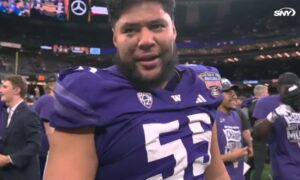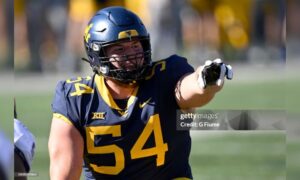By Matthew Marczi
The belief that defensive tackle Steve McLendon’s play over the past two seasons has merited more snaps on defense has become ubiquitous, particularly this offseason. There is little question, of course, that Casey Hampton is the greatest nose tackle in Pittsburgh Steelers history, but McLendon’s rise has most feeling comfortable with saying their goodbyes to Big Snack.
However, with McLendon’s emergence into the starting lineup, it seems inevitable that a slight change in approach and philosophy is in order. Whereas Hampton is the prototypical space-eating tackle whose priority it is to occupy blockers to free up others to make plays, McLendon’s game is, by necessity, more varied.
McLendon has a more athletic build, and does not possess Hampton’s strength, so it is not surprising that he frequently cites Dallas Cowboys nose tackle Jay Ratliff as a big influence, who has the capacity to play more as a 4-3 defensive tackle in a 3-4 scheme while still staying true to his assignments.
“The typical Steve McLendon is…powerful and strong like Casey…smart like Chris Hoke, and…quick and fast like Jay Ratliff”, he told reporters last month. He knows that perhaps he can’t match the strength of Hampton, or the intelligence for the position of Hoke, or even the quickness of Ratliff, but by melding these three traits together, he can play at a high level.
It will be difficult to truly compare and contrast how the running game plays with Hampton and McLendon at nose tackle. Part of that is because Hampton spent much of his career alongside run stuffers such as Aaron Smith, Kimo von Oelhoffen, and Brett Keisel, (not to mention James Harrison, among the best 3-4 outside linebackers against the run in recent memory), whereas McLendon will be paired with Keisel, Ziggy Hood, and Cameron Heyward.
It is easy to imagine, however, that McLendon will be a factor on the stats sheet more frequently than Hampton, which will be the biggest change for the defense, though that does not necessarily mean better.
Take, for example, last season, even though Hampton was obviously not at the peak of his career. He did not register a sack; in fact, he has just nine sacks in his 12 seasons. McLendon, making no starts, registered two sacks on the year, including two that he split credit for, so he was technically in on three sacks.
More telling is that McLendon registered six quarterback pressures, just two fewer than Hampton, but on just 27.5% of the snaps (495 for Hampton against McLendon’s 136). McLendon also forced a fumble; none of Hampton’s four career forced fumbles came in the last two seasons.
Given the rapid decline of production from the outside linebacker position over the course of the past two seasons, any additional pressure that the front line can generate would most certainly be welcome until LaMarr Woodley can prove that he can stay healthy and Jason Worilds can prove that he can be consistent. McLendon was nearly three times more productive as a pass rusher than Hampton on a per snap basis.
Interestingly, their tackle totals were quite comparable relative to their playing time—McLendon’s seven to Hampton’s 26. On the other hand, four of McLendon’s tackles were solo, whereas only 11 of Hampton’s were unassisted. McLendon also had two tackles for losses.
McLendon claims to have dropped weight from a season ago, which should put him somewhere near Hampton’s comically inaccurate playing weight of 325 as listed by the team. It will be interesting to see how the fourth-year defensive tackle handles double teams relying more on technique and quickness than on strength, certainly.
It also remains to be seen how he holds up under significantly more snaps, considering that he owns but one start to his name. What does seem clear based on the numbers, however, is that he will add a greater playmaking potential to the nose tackle position. And, as he suggests, he can play defensive end in nickel situations—if the coach allows it.
It is a new era along the defensive front seven; four of the seven opening day starters from just two seasons ago are now gone, and another two may very well be in their final season with the team, or at least as the starter. And, bolstered by a new three-year, $7.5 million contract, McLendon plans to be at the center of it all.







